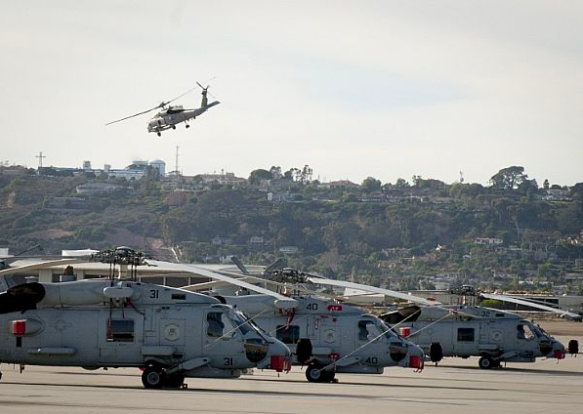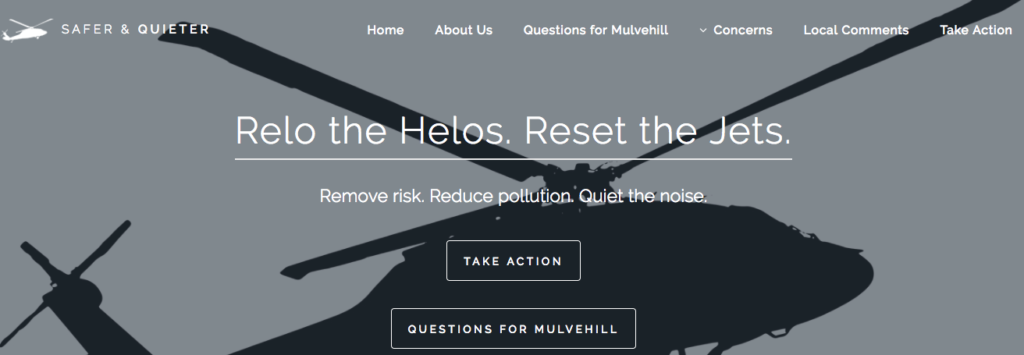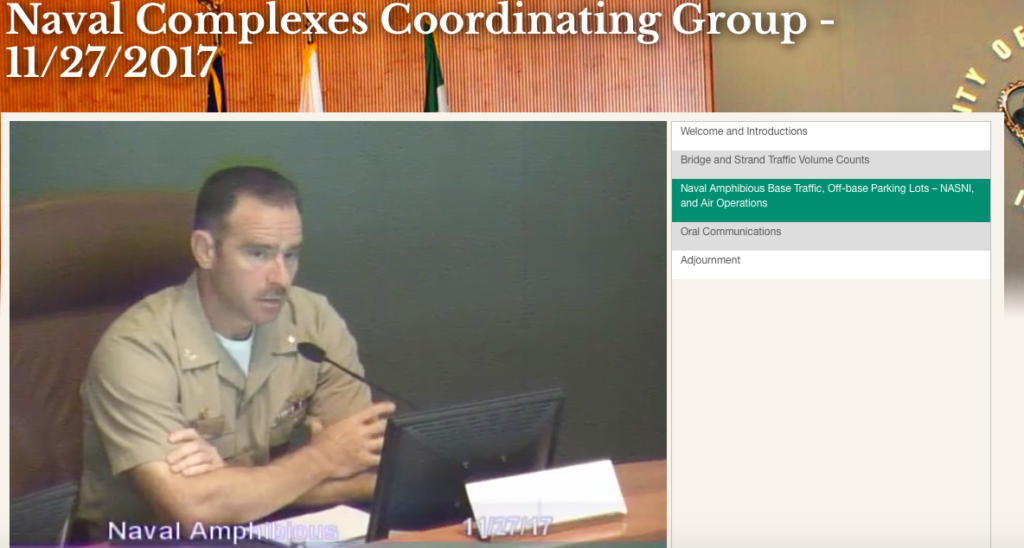
Naval Air Station North Island (NASNI), known as the birthplace of Naval Aviation, recently celebrated its 100 year anniversary. Military aircraft have been flying from North Island since 1911 when Theodore Gordon “Spuds” Ellyson, the Navy’s first aviator, reported to North Island in San Diego Bay, to learn to fly the Curtiss biplane. Aircraft have been flying at Outlying Field Imperial Beach since 1917. The type of aircraft have changed considerably over the years, and with advancements in technologies and speed, some have gotten considerably louder than the biplanes of the past. Today NASNI is the Navy’s master helicopter base, home to 18 helicopter squadrons and one Carrier Onboard Delivery Squadron that flies the C-2 Greyhound. In the not-so-distant future the C-2 will be replaced with the CMV-22 Osprey, tilt-rotor aircraft. While many appreciate seeing the Navy aircraft fly and hearing the sound of freedom that comes with it, some residents are frustrated with the noise and have gone so far as to begin a campaign with a website to stop the noise caused by the aircraft stationed nearby.

The Coronado residents campaigning to move the flight path to reduce noise have a website, https://saferandquieter.com, that describes them as “a group of concerned Coronado and Imperial Beach residents worried about the safety and comfort of our community due to the current flight path in use by the Navy.” Numerous members of the group shared their concerns and frustrations, including Reg Finch who said, “I am a concerned citizen because a lot of the helicopter noise is not necessary. I am an aviator, live in the Village and see all the approaches to runway 29 at NASNI. The helicopters follow no prescribed approach procedure over the beach in front of the ‘Shores’ and the Del. The noise is horrific with the frequency as often as every 2-3 minutes. No training should be done in a high density traffic area such as San Diego, with Lindbergh field just across the bay!!! There are military bases in Nevada and Arizona with great weather and no Class ‘B’ airspace.” Andy Koczon also shared, “I cannot speak for the people on First Street or the Cays on their specific concerns, but first…we want all to know that we LOVE the NAVY. Many of us are retired Navy…and that includes a bunch of pilots. All we are asking is something very simple, that the Navy return to the flight path they used from 1984 to 2012. We are happy to hear the noise…but feel moving the flight track back to pre-2012 approach (you can see this on our website) is an easy compromise, we will still hear the sound of freedom, at a more reasonable decibel level. We are not attacking the Navy, just asking them to be a nicer neighbor.”

Many of the comments from the Safer and Quieter website make it clear there is a misunderstanding of the history of the differing flight paths, visual approach and instrument approaches, and what the Navy base leadership is trying to educate the local community on. In an effort to provide the most accurate and up to date information to the public, Naval Base Coronado’s Commanding Officer, Capt. Scott Mulvehill, provided a brief to the community in November 2017 (you can watch by clicking that link). Many of the statements on the Safer and Quieter website were identified as misconceptions based on opinions and beliefs rather than facts. “I want to address some of things we are seeing online and talk through it so people understand what is being stated, and what is actually happening out there.” Said Mulvehill, “the flight paths have remained constant for over 20 years.” Mulvehill addressed many other topics and went into great detail describing the various approach paths and why they are used.

Naval Base Coronado (NBC) has expressed to the community its commitment to operating safely and responsibly while being good neighbors. The Safer and Quieter website has a page called ‘Questions for Mulvehill’ and I asked the NBC spokeswoman, Ms. Sandy Duchac, if they were aware of these questions for NBC’s Commanding Officer, Capt. Scott Muvlehill. Duchac responded saying, “The Base is aware of the ‘Questions for Mulvehill’ page. Most of the questions raised were answered by Capt. Mulvehill during the November Naval Complexes meeting at City Hall Air Operations brief.” NBC encourages feedback from the community if at any time Navy aircraft are operating in what appears to be an unsafe manner or if there are concerns regarding training exercises. Naval Base Coronado operations invites residents to formally register complaints on their website and they will investigate the matter.
With the training requirements for both the locally based Navy aircraft and the Navy aircraft stopping over prior to deploying with a carrier strike group, the noise complaints will likely continue. In just 24 hours I received nine emails from passionate members of the Safer and Quieter group sharing their frustrations about noise pollution and safety concerns. I then interviewed some Coronado residents, both Navy and civilian, who live on the flight path or near the base. One shared that prior to moving here a year and half ago her realtor warned her about buying close to the base because of the noise. She said she hears the aircraft noise often during the day but said, “it doesn’t bother me, I think it’s cool.” A Navy spouse shared that she “loves seeing the helicopters fly by,” and “is so happy the Navy brought her family to Coronado, it is such a wonderful place to live.”
NBC also shares information on their website about how the Department of Defense (DoD) initiated the Air Installation Compatible Use Zones (AICUZ) program to protect the public’s health, safety, and welfare and to prevent encroachment from degrading the operational capability of military air installations in meeting national security. As found on their website, their objectives are to “Promote the health, safety, and welfare of civilians and military personnel by encouraging land uses which are compatible with aircraft operations • Protect Navy installation investments by safeguarding the installations’ operational capabilities • Reduce noise impacts caused by aircraft operations while meeting operational, training, and flight safety requirements, both on and in the vicinity of the air installations.”
While aircraft noise may not be welcomed by some residents, training is essential for our Naval Aviators as they prepare to deploy around the world protecting the freedoms we enjoy.




